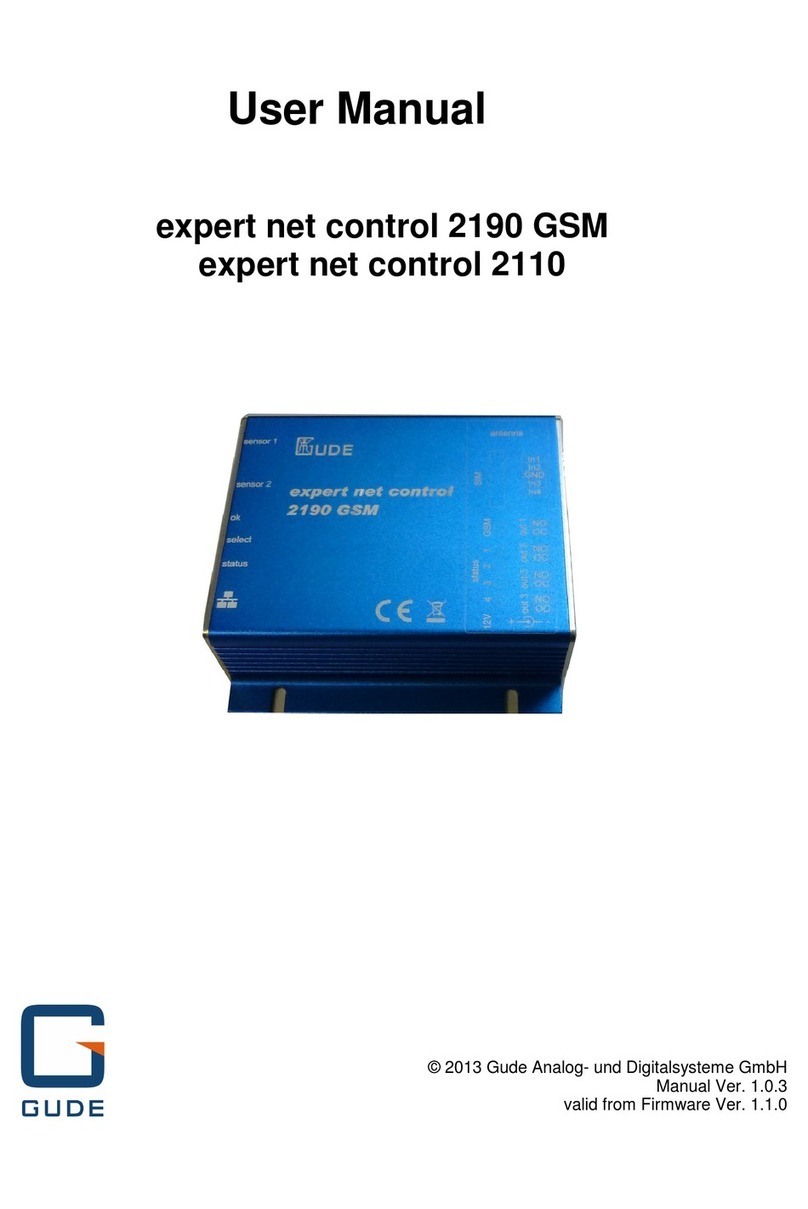
3
Expert Net Control 2304 © 2022 GUDE Systems GmbH
Table of contents
1. Device Description 5
1.1 Security Advice .............................................................................................................. 6
1.2 Content of Delivery ........................................................................................................ 6
1.3 Description ..................................................................................................................... 6
1.4 Installation ...................................................................................................................... 7
1.4.1 Connection Example ................................................................................................. 8
1.5 Technical Specifications ................................................................................................ 9
1.6 Sensor ........................................................................................................................... 10
2. Operating 12
2.1 Operating the device directly ..................................................................................... 13
2.2 Control Panel ................................................................................................................ 13
2.3 Maintenance ................................................................................................................ 15
2.3.1 Maintenance Page ................................................................................................. 18
2.3.2 Configuration Management ................................................................................... 19
2.3.3 Bootloader Activation ............................................................................................. 20
3. Configuration 23
3.1 Output Ports ................................................................................................................ 24
3.1.1 Watchdog ............................................................................................................... 25
3.2 Input Ports .................................................................................................................... 27
3.3 Ethernet ........................................................................................................................ 28
3.3.1 IP Address ............................................................................................................... 28
3.3.2 IP ACL ..................................................................................................................... 29
3.3.3 HTTP ....................................................................................................................... 31
3.4 Protocols ....................................................................................................................... 32
3.4.1 Console ................................................................................................................... 32
3.4.2 Syslog ..................................................................................................................... 33
3.4.3 SNMP ...................................................................................................................... 33
3.4.4 Radius ..................................................................................................................... 35
3.4.5 Modbus TCP ........................................................................................................... 37
3.4.6 MQTT ...................................................................................................................... 38
3.5 Clock .............................................................................................................................. 39
3.5.1 NTP ......................................................................................................................... 39
3.5.2 Timer ...................................................................................................................... 40
3.5.3 Timer Configuration ............................................................................................... 40
3.6 Sensors .......................................................................................................................... 47
3.6.1 Port Switching ......................................................................................................... 48
3.7 E-Mail ............................................................................................................................ 49
3.8 Front Panel ................................................................................................................... 51




























